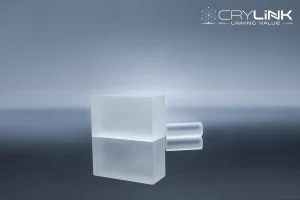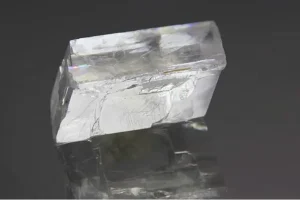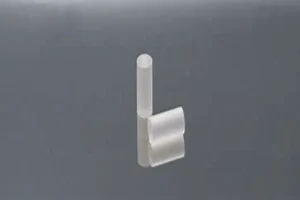Lidar, an acronym for Light Detection and Ranging, is a remote sensing method that uses light in the form of a pulsed laser to measure distances. The role of nonlinear crystals in lidar systems has been transformative, enabling advancements in range measurement and target identification. This article delves into the intricacies of how nonlinear crystals are shaping the future of lidar technology.
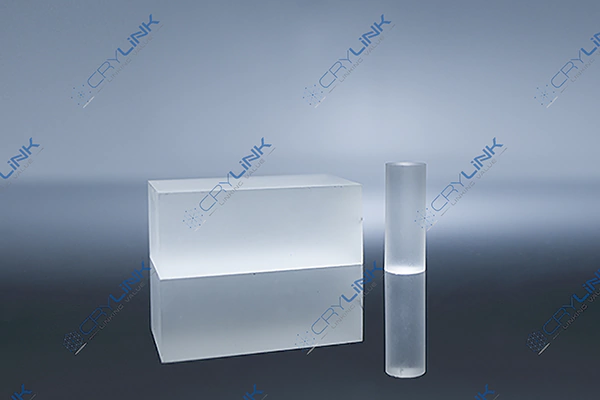
Understanding Nonlinear Crystals
The realm of optics is rife with complexities, and among the most intriguing elements in this field are nonlinear crystals. At their core, nonlinear crystals defy the linear properties that most materials adhere to when interacting with light. While linear optics can predict most light behaviors with straightforward equations, nonlinear crystals introduce a variable that’s dependent on the light’s intensity. This nonlinear relationship means that as light intensity changes, the crystal’s response isn’t proportional, but can exhibit abrupt or dramatic shifts.
In practical terms, this can be visualized as a crystal that modifies light differently when illuminated softly versus when exposed to a bright, intense beam. For instance, at lower intensities, it might let the light pass with little alteration. Yet, when hit with a stronger beam, the crystal could suddenly change the light’s color or combine the frequencies of two light beams.
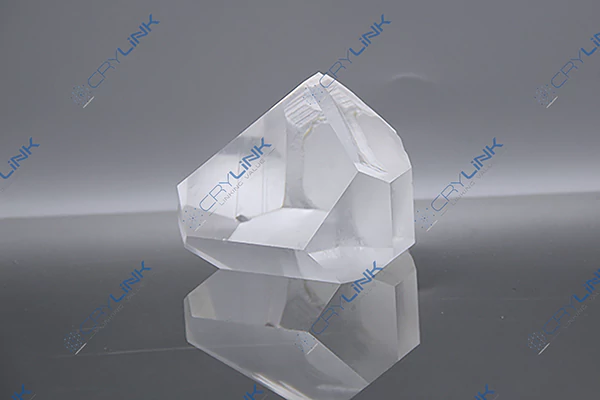
This characteristic stems from the crystal’s atomic structure. The atoms and molecules within nonlinear crystals are arranged in a manner that allows them to respond dynamically to electric fields, such as those from a beam of light. When the light’s electric field is strong enough, it can induce a polarization in the crystal that goes beyond a simple, linear response. It’s this enhanced polarization that gives rise to the crystal’s nonlinear optical effects.
Nonlinear Crystals in Range Measurement
Enhanced Accuracy
Lidar, which stands for Light Detection and Ranging, operates on a relatively simple principle: it sends out a pulse of light and measures the time it takes for that light to return after bouncing off an object. This time can then be translated into distance, creating a precise 3D map of the surrounding environment. While the principle may be straightforward, achieving high accuracy in practice is challenging. Environmental factors like atmospheric conditions can distort the laser signal, leading to inaccuracies. Nonlinear crystals, however, provide a solution. By allowing operators to finely tune the phase and frequency of the laser light, these crystals can correct for external distortions, ensuring measurements are as accurate as possible. In fields like aerial topographic mapping, where even small errors can translate to significant deviations, such enhanced accuracy is invaluable.
Improved Resolution
Resolution in lidar systems refers to the system’s ability to distinguish between two or more objects in close proximity to each other. Imagine trying to differentiate between two buildings that are very close together from a high-altitude drone. With a lower resolution system, those two buildings might appear as one. Nonlinear crystals, by refining the emitted laser pulse’s properties, allow lidar systems to pick up on these fine details. As a result, structures or objects that might have been overlooked or merged together in other systems stand out distinctly.
Target Identification with Nonlinear Crystals
In certain applications of lidar, merely mapping the environment isn’t enough. Especially in defense, surveillance, and certain scientific applications, it’s crucial to know what the mapped objects are made of.
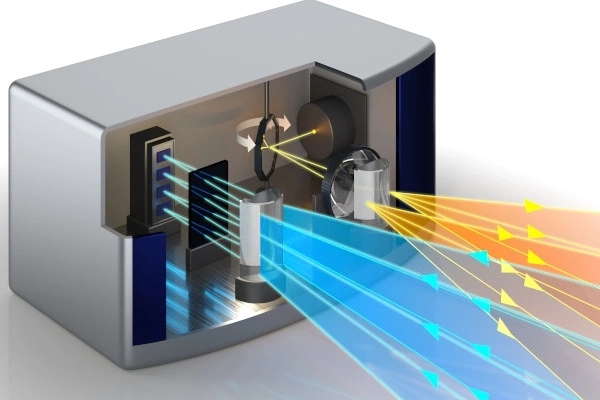
- Spectral Analysis: Every material reflects light differently, with distinct reflective signatures across various wavelengths. By capturing and analyzing these signatures, it’s possible to deduce the material composition of a target. Nonlinear crystals are used to enhance the sensitivity and specificity of this spectral analysis. For instance, being able to determine whether a surface is made of metal, wood, or vegetation can be crucial in both military and environmental studies.
- Polarization Control: Light can be thought of as oscillating in various planes, and this oscillation’s direction is termed as its polarization. When light bounces off objects, its polarization can change based on the object’s properties. Nonlinear crystals allow lidar systems to emit light with controlled polarization and analyze the changes in the returned light’s polarization. This aids in revealing additional information about a target, like its shape, orientation, or even its roughness. Such data can be vital, for example, in identifying camouflaged objects or understanding the orientation of structures in architectural studies.
The integration of nonlinear crystals in lidar systems epitomizes the rapid advancements in photonic technologies. By harnessing the unique properties of these crystals, we are better equipped to understand and interact with the world around us.
Advances in Lidar Technology
Solid-State Lidar
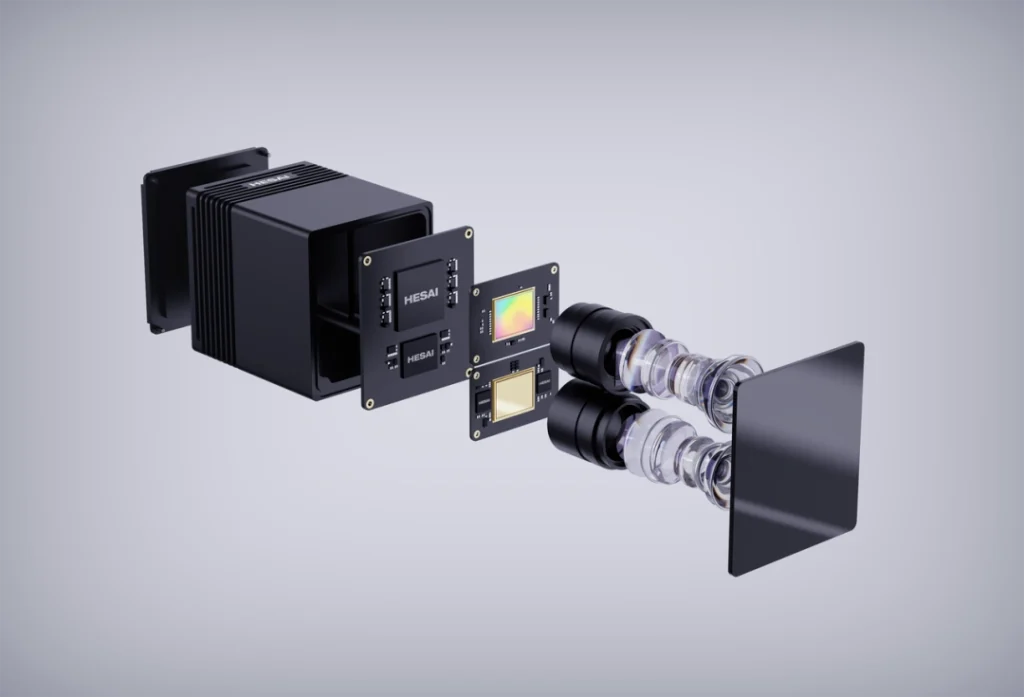
Solid-state lidar has ushered in a new era for optical distance measurement techniques. Unlike traditional lidar systems, which often used rotating mirrors to scan the environment, solid-state versions have no moving parts. This design shift offers a host of advantages including increased durability, reduced maintenance, and the possibility of miniaturization. Central to this technology’s performance are the nonlinear crystals, which are integral in adjusting the properties of the emitted laser light. Their inclusion ensures that solid-state lidars can function without sacrificing the accuracy and resolution achieved in their mechanical counterparts.
Quantum Lidar

The fascinating realm of quantum mechanics offers promising improvements to lidar technology. At the heart of quantum lidar is the generation of entangled photon pairs, a process where two photons are linked in such a way that the state of one instantly influences the state of the other, regardless of the distance separating them. Nonlinear crystals are pivotal in creating these photon pairs. By leveraging this quantum entanglement, lidar systems can achieve super-resolution, allowing them to detect details that would be invisible to conventional systems. Additionally, the quantum nature of the photons offers enhanced target identification, especially useful in complex or cluttered environments.
Applications in Autonomous Vehicles

Autonomous vehicles, often envisioned as the future of transportation, are heavily reliant on advanced sensor systems to perceive their surroundings. Lidar stands as one of the most crucial of these sensors, providing a 3D map of the environment in real-time. The advantages brought about by nonlinear crystals—improved accuracy, resolution, and durability—are particularly crucial for these vehicles. Any error or malfunction could have dire consequences on the road. Hence, the enhanced capabilities that nonlinear crystals bring to lidar systems are not just improvements; they’re necessities for the safe operation of autonomous vehicles.
Environmental Monitoring
Beyond the realm of transportation, lidar has found a valuable place in environmental studies and monitoring. By emitting laser pulses and measuring their reflection from particles in the atmosphere, lidar systems can make precise determinations about air quality, particulate matter concentration, and even the presence of specific gases. Nonlinear crystals further refine these measurements, allowing for detailed insights into atmospheric conditions. For instance, by studying how pollutants scatter and absorb light, scientists can identify pollution sources or predict the dispersion pattern of airborne contaminants. Furthermore, lidar can also be pivotal in predicting natural disasters by monitoring changes in the environment, such as the movement of tectonic plates or shifts in ocean currents.
In summary, nonlinear crystals have significantly enhanced the capabilities of lidar systems across various applications. Their influence ranges from driving technological innovation in autonomous vehicles to aiding crucial environmental studies, reaffirming the vital role of advanced materials in shaping the future of photonics and sensing technologies.
Conclusion
Nonlinear crystals stand as a testament to the nuanced and intricate world of optics. Their integration into lidar systems is not just an afterthought; it’s a strategic move that brings out the best of both the crystal’s properties and lidar’s capabilities. By leveraging the unique attributes of nonlinear crystals, lidar systems can achieve feats that were previously deemed challenging or impossible. Whether it’s in discerning minute details from a distant object or in navigating a self-driving car through a bustling city, these crystals play an indispensable role. Looking ahead, as our demands for precision and sophistication grow, the bond between nonlinear crystals and lidar is poised to grow stronger, promising innovations that could redefine our understanding of optical sensing.
FAQs
- What are nonlinear crystals?
- They are materials that change their refractive index based on the intensity of light passing through them.
- How do nonlinear crystals enhance the accuracy of lidar systems?
- By manipulating the phase and frequency of the emitted laser light, they improve distance measurements.
- Why are nonlinear crystals crucial for target identification in lidar?
- They enhance spectral analysis and polarization control, providing detailed insights into the target’s nature.
- What role do nonlinear crystals play in solid-state lidar systems?
- They enable efficient phase and frequency control, leading to more compact and durable lidar systems.
- How are nonlinear crystals used in quantum lidar?
- They generate entangled photon pairs, which can achieve super-resolution and enhanced target identification.


